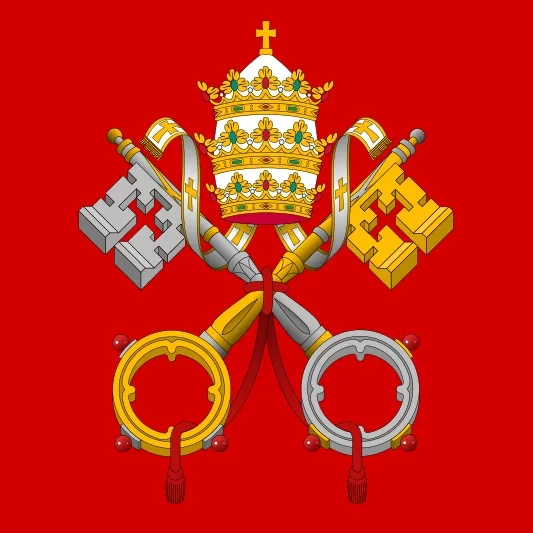The Catholic Church in Ghana needs to engage in “aggressive catechesis” after census figures showed it is shrinking rapidly, the president of the country’s bishops’ conference said Monday.
In a Nov. 13 address at the bishops’ plenary assembly in Sunyani, west-central Ghana, Bishop Matthew K. Gyamfi noted that the proportion of Ghanaians identifying as Catholics had fallen from 15.1% in the 2000 census to 10.1% in the 2021 census.
“Available records show that the Catholic population increased steadily from 1880 until 2000 when the Catholic population was 15.1%,” he said. “The Catholic population, however, dropped from 15.1% in the 2000 census, to 13.1% in the 2010 census (that is, 3,230,996 of 24,658,823).”
“This figure further declined to 10.1% in the 2021 census, down from 3,230,996 to 3,079,261, meaning that statistically, the Church lost approximately 230,000 of its members within the last 10 to 11 years.”
“For us, this is indeed a disturbing trend for our Church, considering that Our Lord has commissioned us to go to all nations, towns, cities, villages, homes, and families to baptize and teach them.”
—
—
Ghana’s statistics run contrary to broader trends within the Catholic Church in Africa. According to the most recent edition of the annual “Statistical Yearbook of the Church,” the number of Catholics on the continent rose from 257 million in 2020 to 265 million in 2021, an overall increase of more than 8 million.
The proportion of Catholics in the wider African population also grew slightly, from 19.33% in 2020 to 19.38% in 2021.
Bishop Gyamfi, who has led Ghana’s bishops’ conference since 2022, suggested that rapid urbanization was an important factor in Catholicism’s decline in the West African country.
“A cursory look at all the census figures reveals a trend which seems to suggest that, while the Church appears to post decent percentages in rural communities, it is hemorrhaging most rapidly in the urban centers,” he said.
“The census data suggests that when Catholics move from the rural areas to the urban centers, they fail to sustain their Catholic faith and fall prey to other sects. The reasons for this sad phenomenon need to be studied carefully by the bishops and their major stakeholders in order to find a permanent solution to the problem.”
Gyamfi, the 66-year-old bishop of Sunyani, said the Church needed to question its pastoral strategies in the country’s cities.
“For instance, we have to urgently discuss how to make the Church and her ministers physically and spiritually closer and present in all communities in the urban centers,” he said.
“In this regard, the concept of Small Christian Communities (SCCs) may be vigorously pursued, while the small communities that are ripe may transform into rectorates and parishes.”
He said that the figures should also inspire new efforts to catechize the Catholic population.
“The Church in Ghana may embark on an aggressive catechesis to deepen the knowledge of the lay faithful about the faith,” he said.
“The Church must strengthen and deepen the catechesis offered for the reception of the Sacraments, particularly the sacraments of Christian initiation, so that the catechesis is not only theoretical but one that leads to true conversion of heart and mind of the catechumens.”
Gyamfi said that the Church should pay particular attention to teaching the faithful about the “false security and dangers of the so-called Prosperity Gospel.”
The Prosperity Gospel, also known as the “health and wealth” Gospel, is a phenomenon associated with Pentecostalism in which believers are encouraged to make donations with the promise that God will bless them with physical well-being and riches. The Catholic Church regards the Prosperity Gospel as a distortion of Christ’s teaching.
The proportion of Ghanaians identifying as Pentecostals has increased from 24.1% in 2000 to 31.6% in 2021. The spread of Pentecostalism in Ghana has prompted what scholars have called the “pentecostalization of Catholicism,” marked by an emphasis on healing and deliverance ministries, as well as a stress on the Holy Spirit and the individual’s relationship with Christ.
There has also been a rise in the percentage of Muslims in Ghana, from 17.6% in 2010 to 19.9% in 2021. The overall proportion of Christians barely changed in the same period, rising from 71.2% in 2010 to 71.3% in 2021.
Gyamfi has previously cited other factors for the drop in Catholic numbers, including the negative effects of social media, inadequate formation for marriage and family life, a failure to involve the laity in pastoral ministry, and a decline in missionary zeal.
Other Ghanaian bishops have suggested that Catholics attending educational institutions such as teacher-training colleges and universities are especially prone to joining other Christian communions.
Concluding his address to the country’s Catholic bishops, Gyamfi said that the Church needed to adopt “a multi-pronged, all-hands-on-deck approach in her efforts to reverse the downward trend of her numbers.”
“In this regard, we must use both the ‘shepherd’s approach’ and the ‘fisherman’s approach’ of evangelization,” he said.
He also called for the adoption of a catechetical approach that stressed the “3Ds” of doctrine, discipleship, and devotion.
“The greatest challenge of the Church in Ghana is the lack of implementation of policies and programs,” he commented.
“Steps must be taken to implement decisions taken and policies adopted, especially decisions taken to reverse the downward trend in membership. The Church exists not for its own sake but for the sake of the world to which it is sent. We need to adopt an attitude of humility, gentleness, and listening.”
The Catholic Church in Ghana consists of 20 dioceses, including four metropolitan archdioceses. Prominent Ghanaian churchmen include the Vatican Cardinal Peter Turkson and Archbishop Charles Palmer-Buckle of Cape Coast.
Another Ghanaian member of the College of Cardinals, Cardinal Richard Kuuia Baawobr died in November 2022, exactly three months after receiving the red hat.











